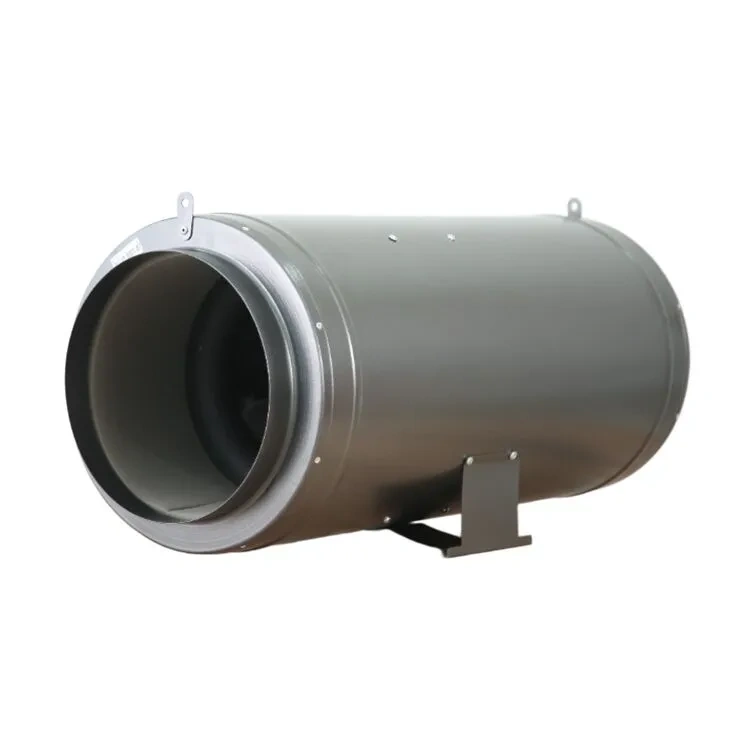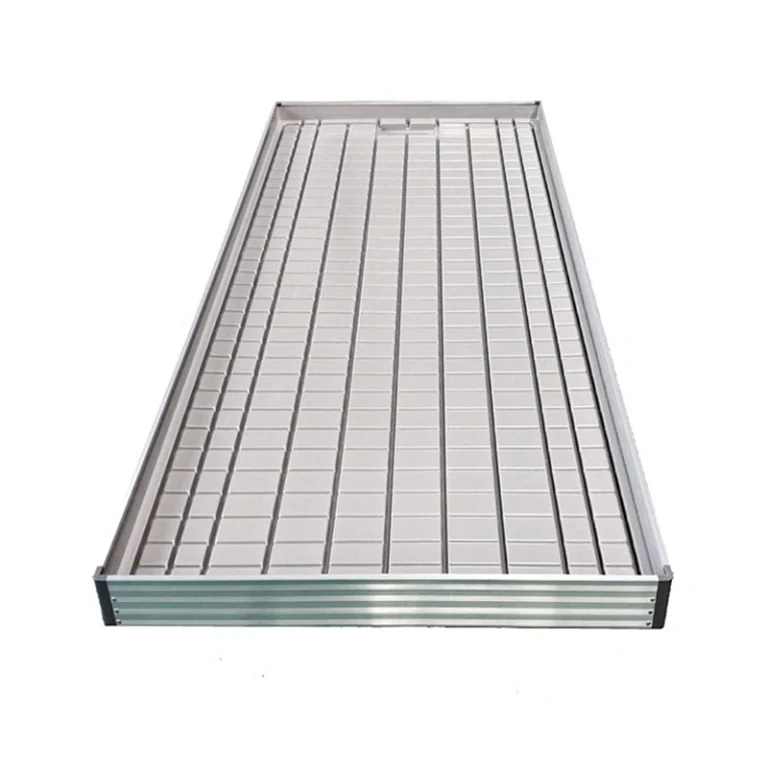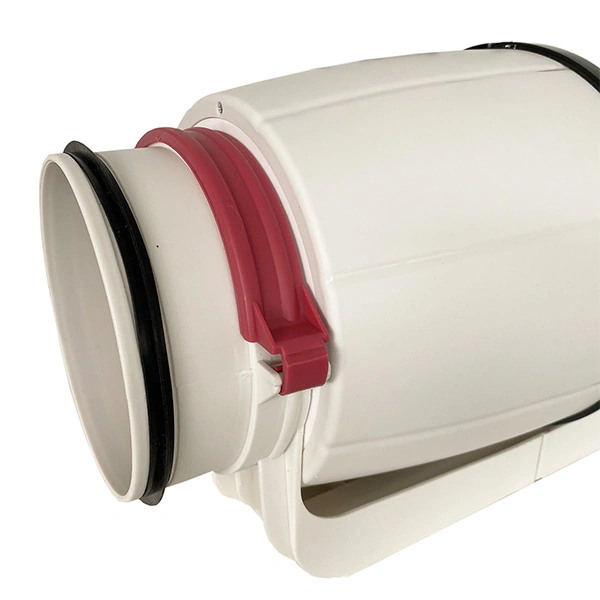Why Should You Install an Inline Duct Fan?
Benefits of Using an Inline Duct Fan
Adding an inline duct fan to your ventilation system comes with benefits worth noting! One of the important advantages is how it increases the air flow efficiency in whatever space one applies it to – home or office, like an office or an industrial environment! They are a godsend in maintaining air circulation for maintaining temperatures on the optimal level and enhancing the overall air quality of the space.
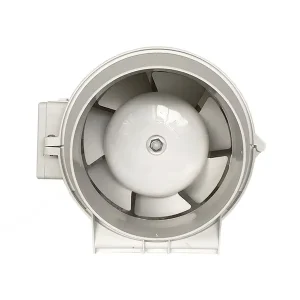 Furthermore, inline duct fans are energy-efficient. By boosting airflow within your HVAC system, they reduce the load on your main ventilation system, thus reducing energy usage and utility costs. They are also quiet, which is perfect for areas where noise is an issue.
Furthermore, inline duct fans are energy-efficient. By boosting airflow within your HVAC system, they reduce the load on your main ventilation system, thus reducing energy usage and utility costs. They are also quiet, which is perfect for areas where noise is an issue.
One of the main benefits is that they are versatile in that inline duct fans can be available in different sizes and capacities to meet your very specific requirements exactly. In addition, they include variable speed control, automatic shutdown, and delay timer, allowing you to personalize the fan operation to different situations. These Fan Controllers are user-optimum controllers perfect for regulating single fans. They can adjust fan speed from 0-100% and support up to 300 watts. They are very versatile for varied ventilation configurations.
Common Applications for Inline Duct Fans in Ventilation Systems
Inline duct fans are typically applied to many applications because they are efficient and versatile. In buildings, they are typically part of HVAC systems that serve the purpose of providing a boost of air in between rooms or in between floors of a house to have balanced heating or cooling all over the entire living space.
In business stores or offices for commercial purposes and in factories, as well, inline duct fans are useful to ensure airflow by ventilation and bringing new air into the air for refreshing. It also keeps the air fresh in spaces with heavy dust or smells by circulating such spaces.
For the sake of providing space for plants to develop in greenhouses or indoor horticulture gardens for gardening use, etc., is employing inline duct fans since it enables one to control the ideal environment in terms of temperature and humidity control and constant clean air supply for plant health.
What Tools and Materials Do You Need for Installation?
Essential Tools for Installing an Inline Duct Fan
In properly installing an inline duct fan, you will require a set of screwdrivers for mounting brackets and piece-to-piece connections. You might also use a power drill to drill mounting holes if needed. Having a measuring tape will also assist you in getting the fan installed in the duct system properly.
Make sure you have electrical tape and wire strippers available when you connect the fan to your system for safety reasons and having a utility knife handy will come in useful if you need to cut through insulation or flexible ductwork, during installation.
For controlling your inline duct fan operation, you can try using a fan speed controller. With the adjustable speed levels and accurate adjustment, the unit allows you to tailor the air flow based on your requirements.
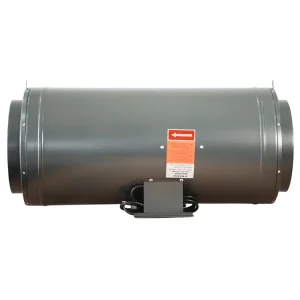
Materials Required to Ensure Proper Installation
When installing an inline duct fan within your ventilation system, it’s important to have materials as well as the proper tools at hand. Make sure to have mounting brackets or straps that are designed specifically for holding inline duct fans. These are essential to keep the fan in place and secure while in operation.
You will need tubes or rigid duct materials to properly mount the fan on the current ventilation system. Ensure the tubes are sized to accommodate the sizes of the inlet and outlet of the inline duct fan that you are to use.
What Are the Steps to Install an Inline Duct Fan Correctly?
Assembling the Inline Duct Fan Components
Start by putting together all the parts of your inline duct fan according to the manufacturer’s directions. You might have to bolt on mounting brackets and secure connectors to the fan case. Ensure all is firmly connected so that there won’t be any vibration when the fan operates. Make sure you safely hook up your fan with a speed controller during this phase of the process. The fan controllers are user friendly and of quality for managing individual fans.
Connecting the Fan to Existing Ductwork
Securing the Fan with Clamps or Brackets
Make sure to fasten your inline duct fan to the current duct system, using clamps or brackets specifically made for this task. Make sure to tighten all screws and bolts right. Don’t overdo it as that could harm the parts. You’ll find that fans work better and last longer when they’re securely fastened.
Sealing Connections to Prevent Air Leaks
Make sure seal all the joints between the fan housing and ductwork such that there are no air leaks and energy efficiency is also improved. Seal the joints with metal tape or silicone sealant. Make sure go through the whole seals after installation such that you do not overlook any spots. Making sure your system is sealed maintains performance improved by keeping airflow constantly across your ventilation system.
Wiring and Testing the Electrical Connections
Ensuring Compliance with Electrical Standards
Do not forget to adhere to local electrical standards and codes when wiring your inline duct fan installation. Refer to the manufacturer’s instruction manual and the use of wire strippers to strip the connections appropriately before tightening the wire nut or terminal block. If in doubt whether you should do it yourself, it is prudent to consider hiring a licensed electrician to assist and advice you.
Testing Airflow After Installation
After connecting all the parts properly and switching them to the ON position to check if your inline duct fan is working fine as intended without any strange sounds and movements, you can also use an anemometer to gauge airflow at different locations in your setup. Make sure to tweak the settings on your speed controller as necessary to reach peak performance levels, and remember to test regularly to keep your system running smoothly in the long run.
Why Choose TIDESTAR for Your Inline Duct Fan Needs?
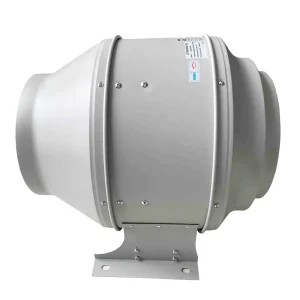
High-Performance Airflow Efficiency
TIDESTAR’s inline duct fans are crafted to enhance the efficiency of airflow delivery, such as the Industry 12inch Inline Duct Ventilation Fan 4000m3/H Duct Exhaust Blower Centrifugal Fan. Our inline duct fans are constructed to maximize airflow circulation within your ventilation system, controlling temperature and enhancing the quality of air in your environment. Through enhanced airflow performance, our inline duct fans assist in reducing the workload of your HVAC system potentially, leading to less energy usage and utility bills.
Quiet Operation for a Comfortable Environment
Choosing the ventilation system involves keeping noise levels in check as a key factor to consider at all times. TIDESTAR’s inline duct fans run quietly, they are perfect for areas where keeping noise to a minimum is vital. Whether used in households, offices or any other location our fans help maintain an atmosphere while delivering top-notch performance. The 6inch 8inch 10inch 12inch Super Silent EC Mixed Flow Inline Duct Fan is suitable for civil and industrial applications. The low noise level is due to the acoustic material that covers the ventilator.
Easy-to-Follow Installation Design
We focus on making things convenient for our users by providing inline duct fans that have installation designs in place for ease of use. Every fan must follow instructions and all the accessories needed to make the setup process straightforward.
Frequently Asked Questions about Inline Duct Fan
Q: What is an inline duct fan used for?
A: An inline duct fan increases ventilation in HVAC. It boosts ventilation in hard-to-reach areas like attics, basements, or grow tents, enhancing air quality and temperatures.
Q: How do I install an inline duct fan?
A: Installation involves cutting into the duct, firmly attaching the fan, and completing connections with clamps or tape. Make sure to refer to manufacturer guidelines or a professional for best results.
Q: What size inline fan do I need?
A: Choose fan size based on duct diameter and airflow required (in CFM). Calculate room volume and ventilation needs to achieve proper performance without oversizing or undersizing.
Q: Can inline duct fans run continuously?
A: Yes, most inline duct fans are suited for continuous operation. Nevertheless, make sure it suits your ventilation requirements and comes with thermal protection to avoid overheating during prolonged operation.

